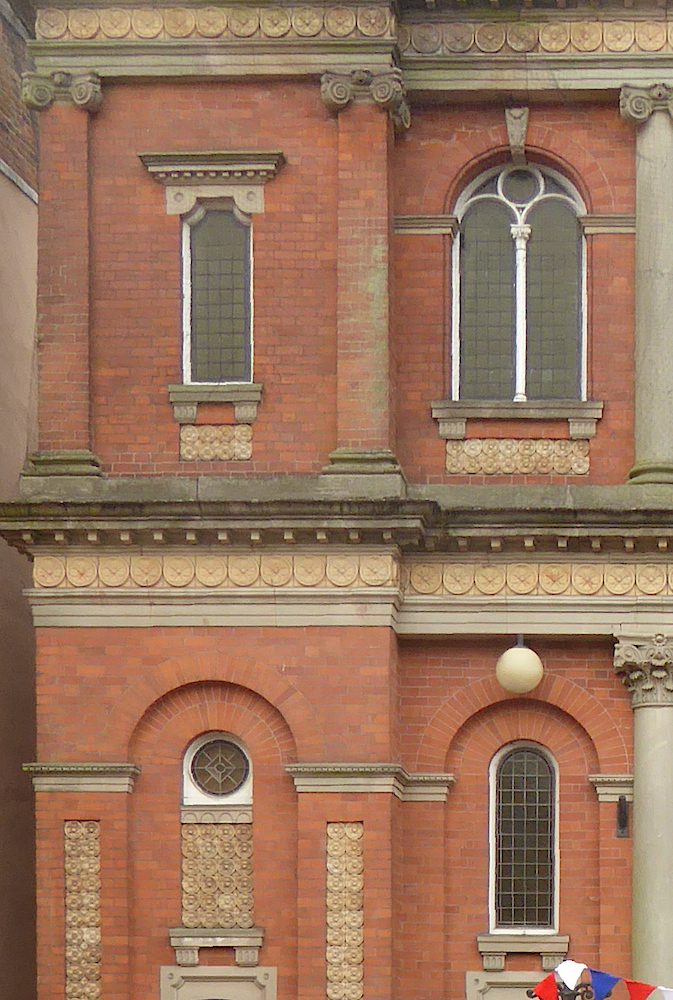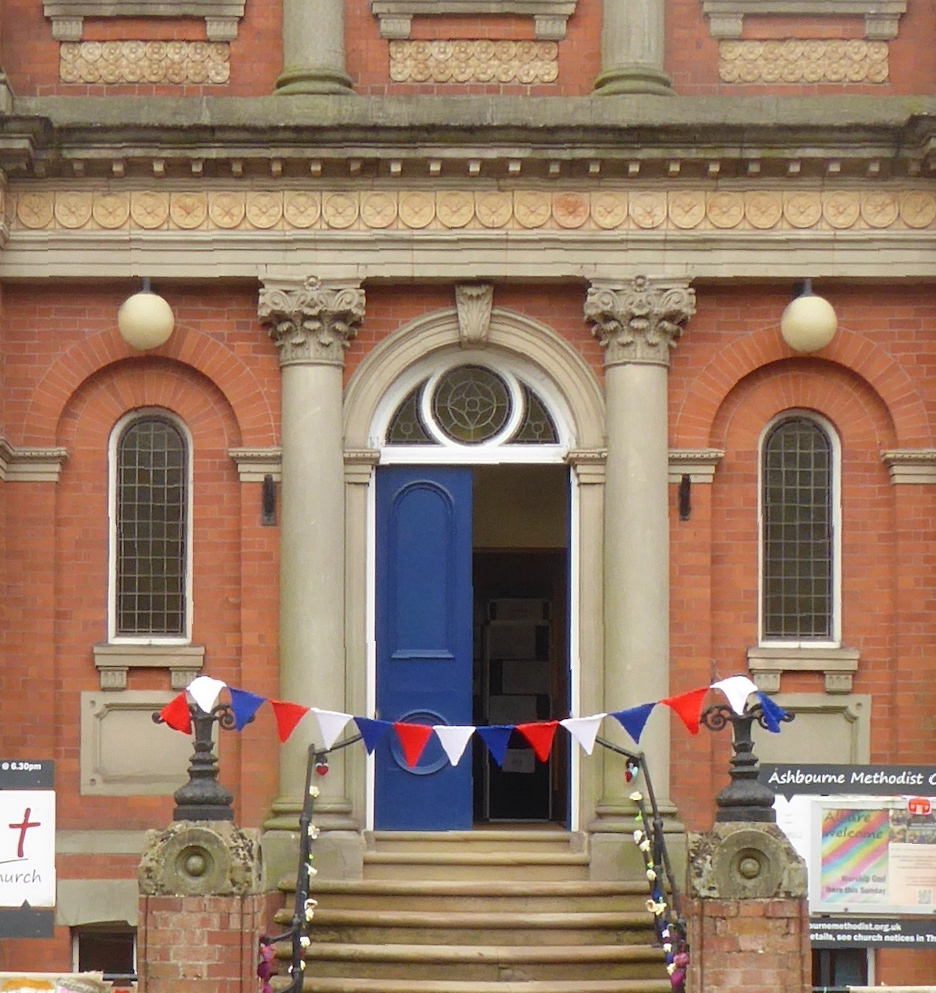

Ashbourne Methodist Church, Derbyshire. This Grade II listed church dates from 1880 (the date appears on the tympanum), but was officially opened in 1881 as the "New Wesleyan Chapel" (listing text). It is succintly described in the same listing text as having "[o]range/red brick with ashlar sandstone dressings and terracotta ornament," and "a Welsh slate roof." What is special about it is the terracotta ornament: Lynn Pearson describes it as being “bespattered with buff terracotta roundels” (65).

The entablatures above both ground and first floors have friezes with terracotta roundels, as do other features of the front façade, in fact the two ground floor windows furthest from the front entrance, on either side, are almost filled with terracotta panles, leaving a small roundel for the glass at the top. Even the parapets of the towers are terracotta-panelled below the balustrades.
The church's Century Hall round the corner has Art Nouveau ironwork (see Hartwell 114).
Link to related material
Photographs by Rita Wood, and text by Wood and Jacqueline Banerjee. You may use these images without prior permission for any scholarly or educational purpose as long as you (1) credit the photographer and (2) link your document to this URL or cite the Victorian Web in a print document.
Bibliography
"Ashbourne Methodist Church." Historic England. Web. 20 October 2021.
Hartwell, Clare; Pevsner, Nikolaus and Williamson, Elizabeth.The Buildings of England: Derbyshire. New Haven and London: Yale University Press, 2016, reprinted with corrections 2020.
Pearson, Lynn.Tile Gazetteer: a guide to British tile and architectural ceramics locations. Shepton Beauchamp: Richard Dennis 2005.
Created 20 October 2021